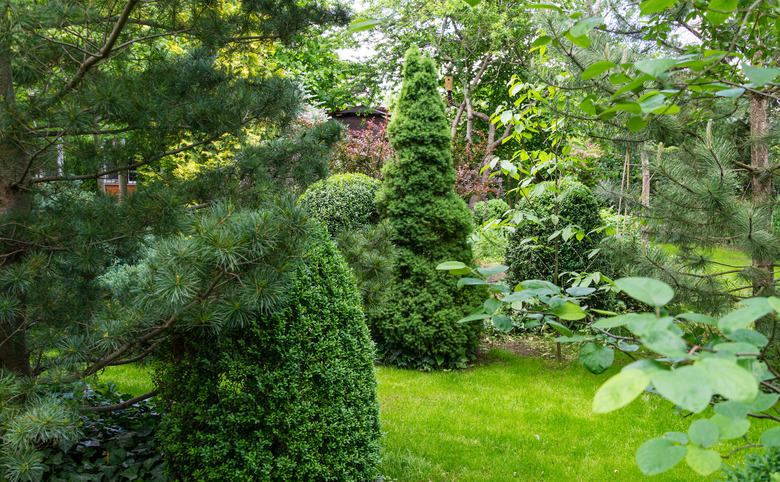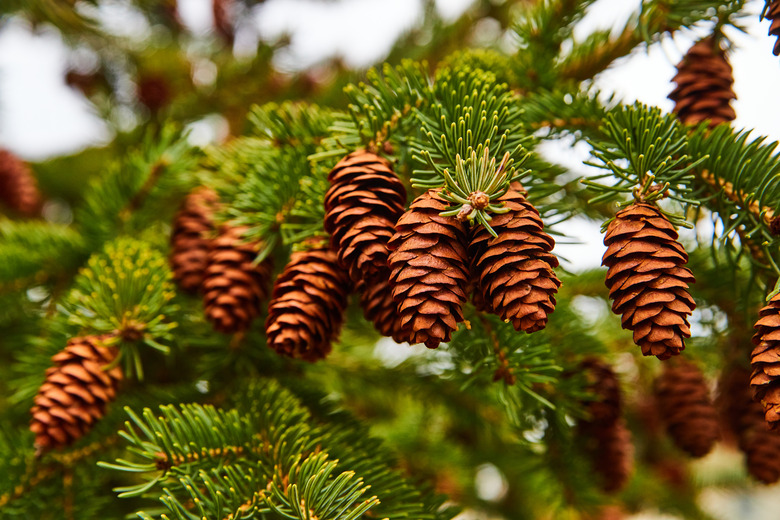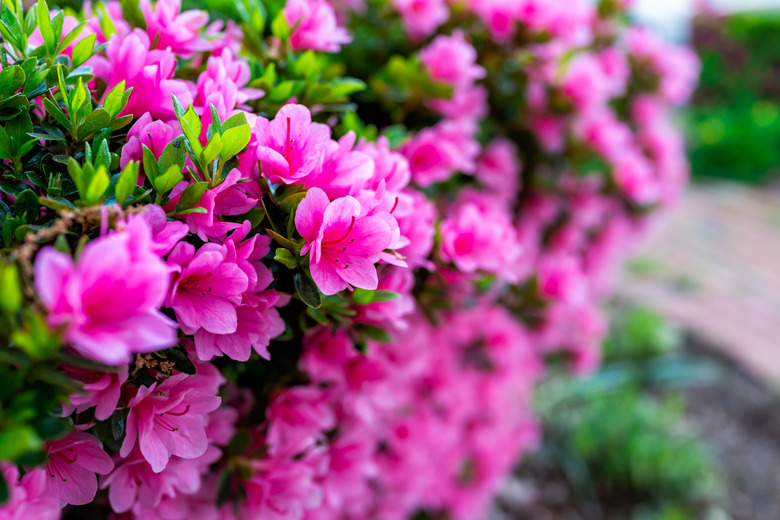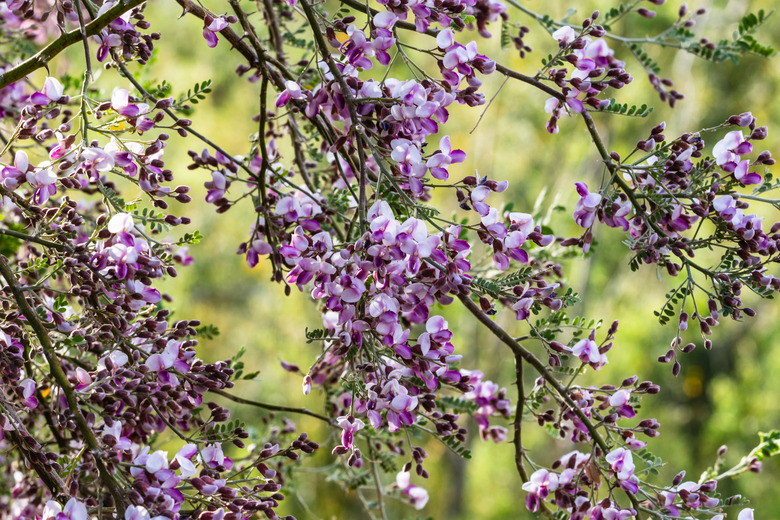11 Trees That Do Not Shed Their Leaves In The Fall
The sight of colorful leaves signals fall to many people, but not all trees go through this yearly ritual. Others lose their leaves at other times of the year or in drought situations. Conifers often come to mind when you think of trees that don't shed their greenery, but there are other types of trees that also hold on to their leaves.
Tip
Evergreen trees stay green year-round and never lose their foliage, even in the winter. Narrow-leafed evergreen trees with needles instead of wider leaves make up the majority of this category, but there are wide-leafed trees that are also evergreen. Deciduous trees lose their leaves in the fall. They usually have wider leaves that change color before falling off. They lose their leaves to protect themselves from colder winter weather.
1. Narrow-Leaf Evergreen Trees
1. Narrow-Leaf Evergreen Trees
This category of evergreen tree includes what you may traditionally think of as an evergreen. They have thin, needlelike foliage and often grow cones to reproduce. Members of this group sometimes have over 100 varieties, all of which share similar characteristics, including being evergreens.
Narrow-leaf evergreen trees include:
- Fir (Abies): The needles of a fir tree are relatively short and flattened with a notch at the tip. They grow individually on the stem.
- Pine (Pinus): There are many varieties of pine trees, with a wide range in needle length. The needles tend to be glossy and grow in clusters, with each cluster usually containing two to eight needles.
- Spruce (Picea): Spruce trees typically grow with a straight trunk and dense branches. Many varieties of spruce trees are used as Christmas trees.
- Juniper (Juniperus): Rather than needlelike foliage, juniper trees often grow scalelike leaves and berrylike seeds.
2. Broadleaf Evergreen Trees
2. Broadleaf Evergreen Trees
Broadleaf evergreen trees grow foliage that looks more like "traditional" leaves. They're wider than the needles of narrow-leaf evergreens. Unlike deciduous trees, these types of trees keep their leaves in the winter.
Examples of broadleaf evergreen trees include:
- Boxwood (Buxus sempervirens): The boxwood grows as a shrub or small tree and has shallow roots and leaves that are approximately 1 inch long and 1/2 inch wide.
- Rhododendron (Rhododendron): Known for their beautiful flowers, rhododendrons can grow as shrubs or small trees. They maintain their thick, broad leaves even during winter.
- Oak (Quercus): You might assume oak trees are deciduous, but some varieties are evergreen, especially in warm climates. Examples include the Japanese oak (Quercus acuta), Monterrey oak (Quercus polymorpha), Mexican oak (Quercus rysophylla), and live oak (Quercus virginiana).
- Holly (Ilex): Many varieties of holly trees and shrubs are evergreen, including American holly (Ilex opaca), Dahoon holly (Ilex cassine), Soft Touch holly (Ilex crenata 'Soft Touch'), and Yaupon holly (Ilex vomitoria).
3. Some Tropical Hardwood Trees
3. Some Tropical Hardwood Trees
Certain tropical trees retain their leaves year-round. This happens because the tropical locations where they grow don't experience the colder winter months that can cause frost damage to the leaves. Some types lose their leaves in the spring or during dry periods.
Some tropical hardwood trees that don't lose their leaves in the fall include:
- Mahogany (Swietenia): While not technically evergreen, the mahogany tree doesn't drop its leaves in the fall like traditional deciduous trees. Instead, it drops its leaves for a short period in late spring, with new leaves growing a week or two after old leaves fall.
- Tamarind (Tamarindus indica): Evergreen tamarind trees grow edible fruit that's often used in food and drink as well as medicines.
- Ironwood (Olneya tesota): These trees are often evergreen, but the leaves can turn yellow and fall in spring in years when they're going to bloom. They can also lose their leaves if they go through periods of severe drought.



